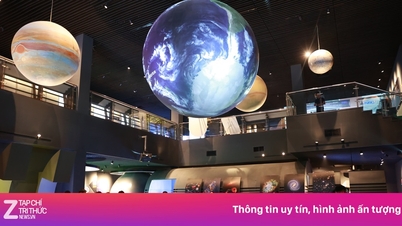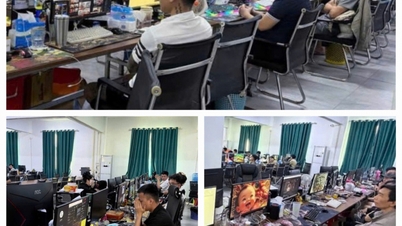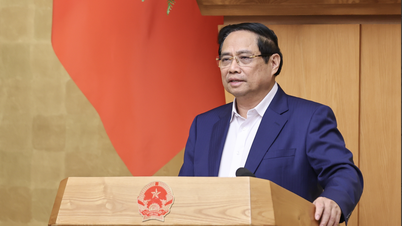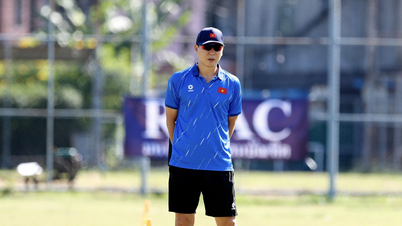
Illustration of exam preparation with AI
In the digital age, artificial intelligence (AI) is gradually becoming a powerful support tool in the field of education , bringing great potential to improve learning efficiency and personalize the learner experience.
Important learning aids
Advanced natural language processing (NLP) models such as ChatGPT, Gemini or Claude AI are capable of condensing information from complex academic documents. They summarize dozens of pages of theory into concise, accurate versions that are flexibly adjusted to the learner's level. This helps learners grasp core knowledge quickly, saving a significant amount of time.
In addition, AI also helps clarify complex concepts. By using deep learning , AI analyzes mathematical formulas or physical laws, then explains them in an easy-to-understand way, accompanied by illustrative examples. They help learners easily absorb difficult content.
AI has brought improvements to practice and testing. Platforms use adaptive algorithms to create personalized practice tests, tailored to each subject, difficulty level, and desired duration, simulating real exams. The technology also adjusts content based on test history, helping learners familiarize themselves with the test format and optimize review effectiveness.
In particular, with the support of machine learning , AI provides instant feedback on the test. The system can quickly detect errors, assess proficiency and suggest knowledge that needs to be reinforced. Detailed feedback helps learners identify points that need improvement, thereby having a more effective study plan.
In addition to the above solutions, AI is also integrated into many other useful tools. Applications such as Qanda, Photomath or Google Lens use computer vision to analyze photos of problems, providing step-by-step solutions, especially effective with math, physics and chemistry exercises.
Additionally, platforms like Quizlet and MochiMochi use AI-driven spaced repetition algorithms. This technology optimizes long-term memorization with minimal review time.
Notably, in Vietnam, educational platforms have also integrated AI to localize solutions. This includes creating mock tests that closely follow the Ministry of Education and Training 's curriculum, analyzing test results, and suggesting review content that is suitable for the country's educational characteristics.
It can be seen that AI is gradually becoming an important support tool, contributing to promoting the development of education, bringing practical benefits to learners.
"Tips" for effective learning with AI
To make the most of the power of AI, students need to use technology scientifically and proactively.
When interacting with AI, ask specific questions . Instead of asking general questions like "solve this problem," ask specific questions, such as "Solve the quadratic equation x2-4x 3=0, step by step, with a solution check." This helps AI provide more accurate and detailed answers.
Always check the AI’s answers against textbooks or other reliable sources. This is especially important for subjects that require high precision, such as math or chemistry. If you find any errors, ask the AI to re-solve them with additional data to correct them.
Use AI tools to analyze your weaknesses. For example, if you often get trigonometry wrong, ask AI to create practice tests or exercises that focus on that area. This will help you review more effectively and on the right track.
Review concepts with apps like Quizlet or MochiMochi to optimize your review time. You can set a fixed study time, about 15-20 minutes a day, and let AI automatically remind you of the content you need to memorize.
Instead of just looking at the answers from apps like Photomath or Google Lens, try solving the problem yourself. Then you can use AI to check and learn the right approach. This will help you understand the problem more deeply.
Based on the roadmap suggestions from AI, build a specific study schedule. Prioritize important topics and spend time practicing mock exams regularly to consolidate knowledge and get used to the pressure of exams.
Harmful effects if used incorrectly
AI is powerful, but it’s not perfect. Large language models (LLMs) can produce inaccurate results if the question is ambiguous or the training data is incomplete. Computer vision technology sometimes fails with unclear handwriting.
In particular, overusing AI, such as copying solutions without thinking for yourself, can reduce the ability to reason logically and solve problems - core skills for long-term learning. Therefore, students need to use AI as a support tool, not a replacement for thinking.
Source: https://tuoitre.vn/bi-quyet-on-thi-hieu-qua-voi-ai-20250528105531631.htm


![[Photo] 60th Anniversary of the Founding of the Vietnam Association of Photographic Artists](/_next/image?url=https%3A%2F%2Fvphoto.vietnam.vn%2Fthumb%2F1200x675%2Fvietnam%2Fresource%2FIMAGE%2F2025%2F12%2F05%2F1764935864512_a1-bnd-0841-9740-jpg.webp&w=3840&q=75)




![[Photo] National Assembly Chairman Tran Thanh Man attends the VinFuture 2025 Award Ceremony](/_next/image?url=https%3A%2F%2Fvphoto.vietnam.vn%2Fthumb%2F1200x675%2Fvietnam%2Fresource%2FIMAGE%2F2025%2F12%2F05%2F1764951162416_2628509768338816493-6995-jpg.webp&w=3840&q=75)

































































































Comment (0)